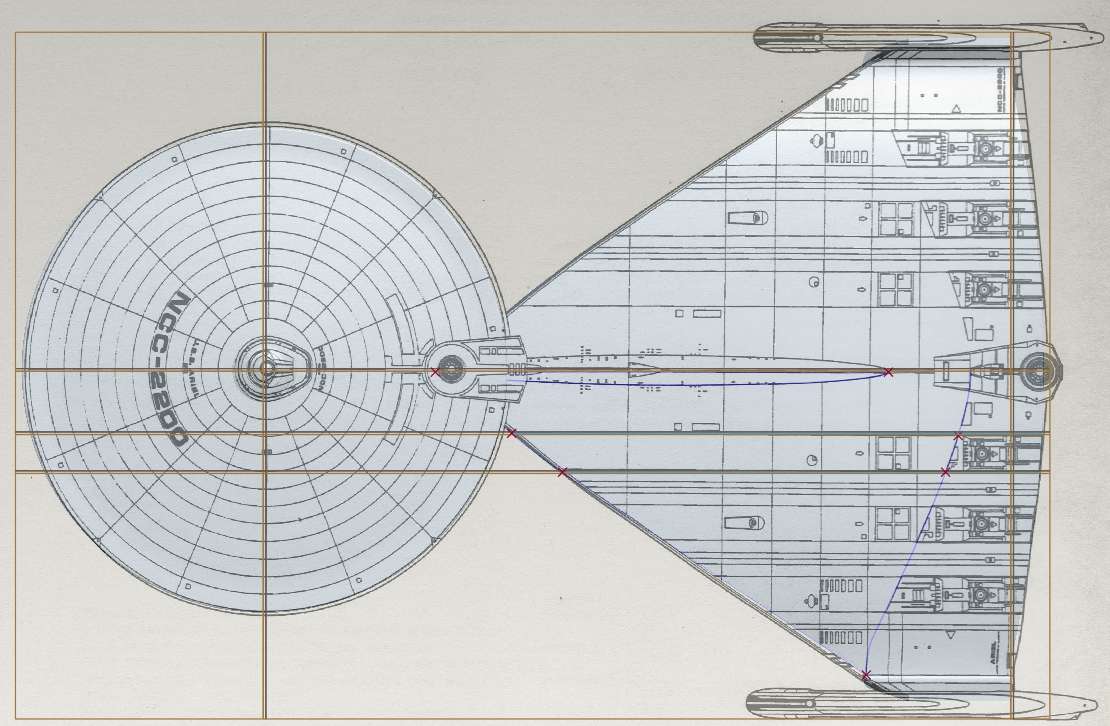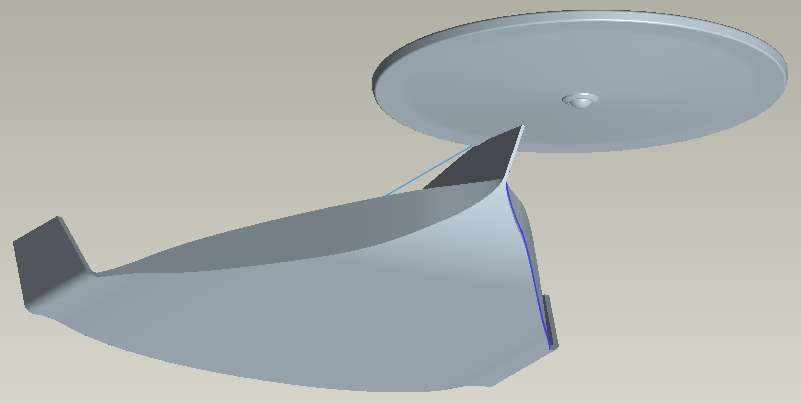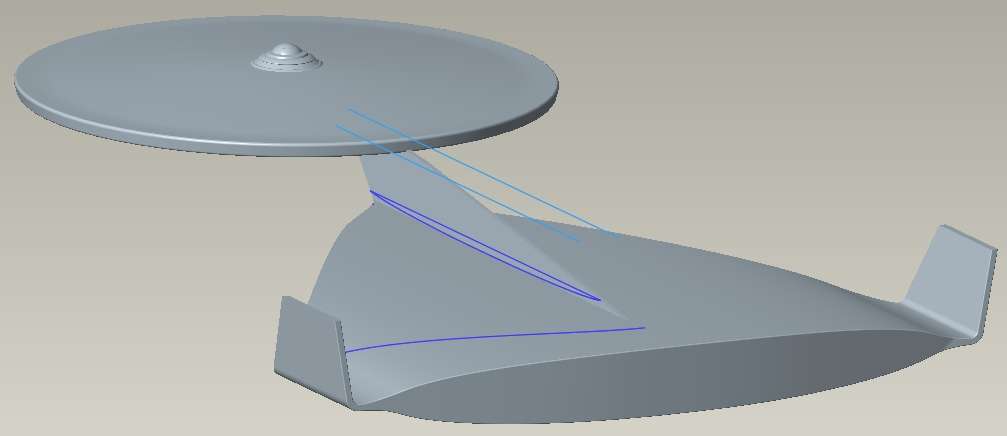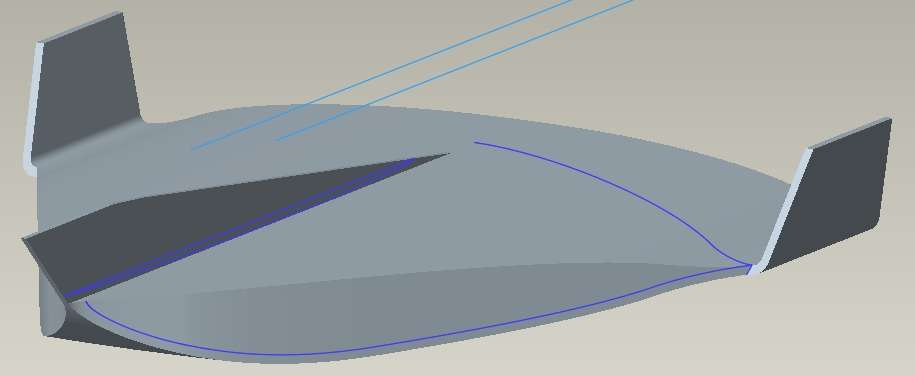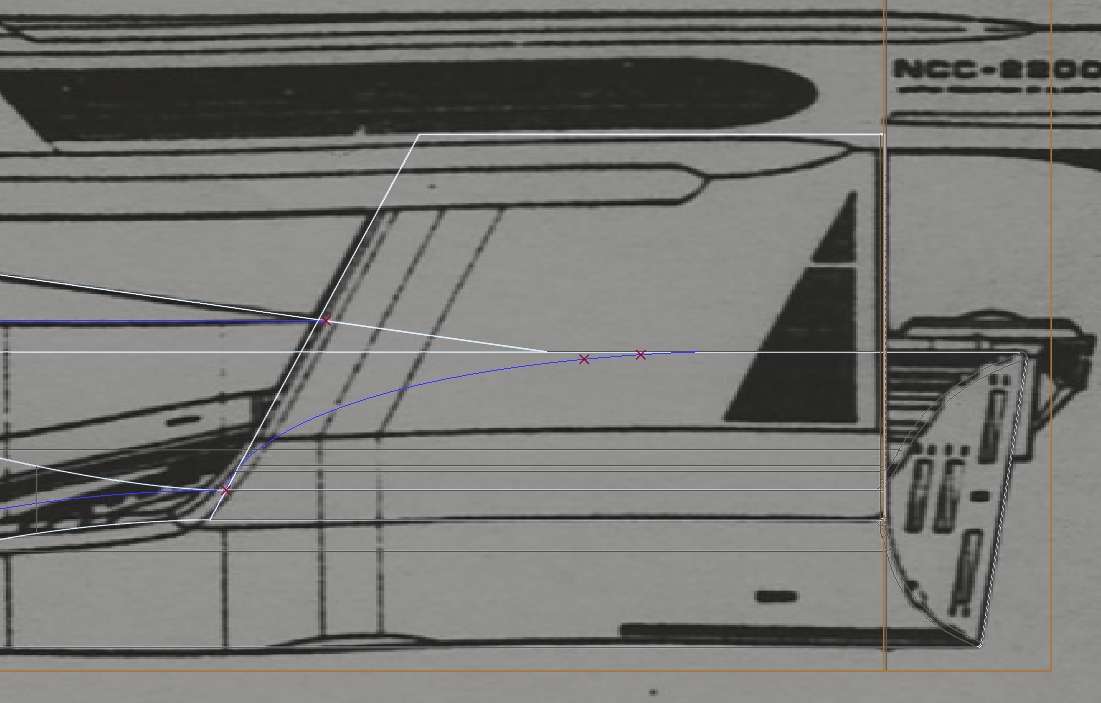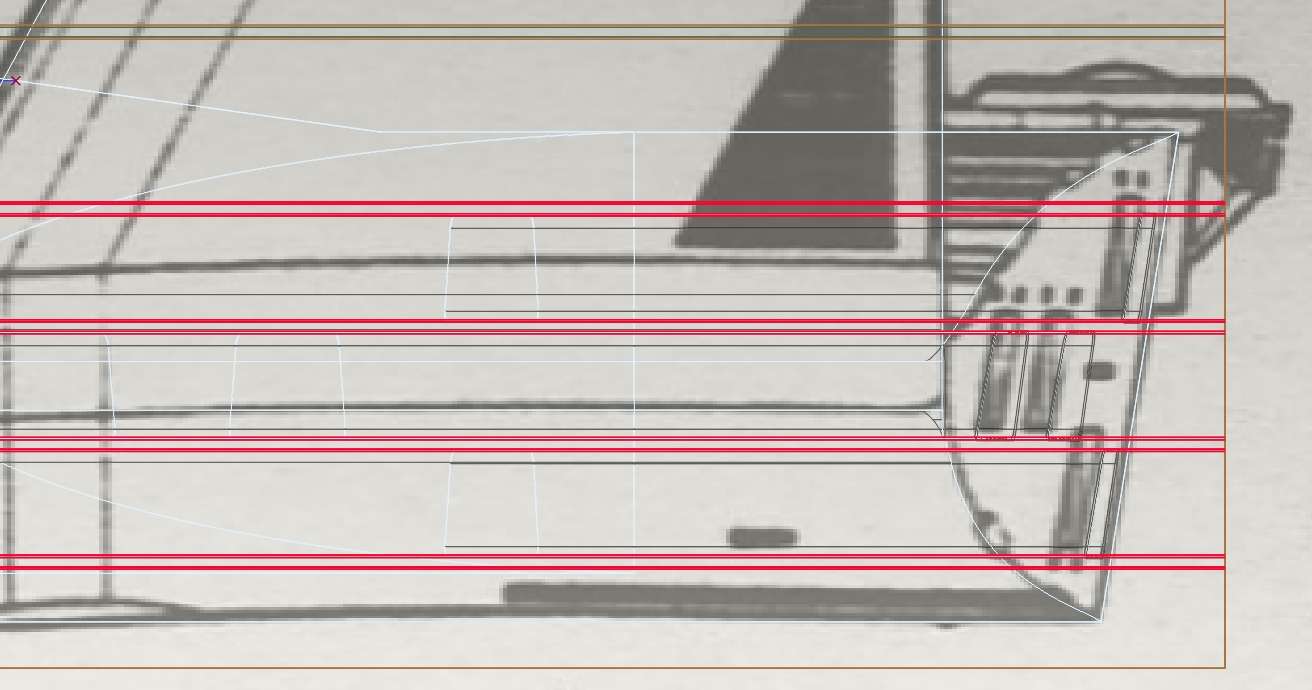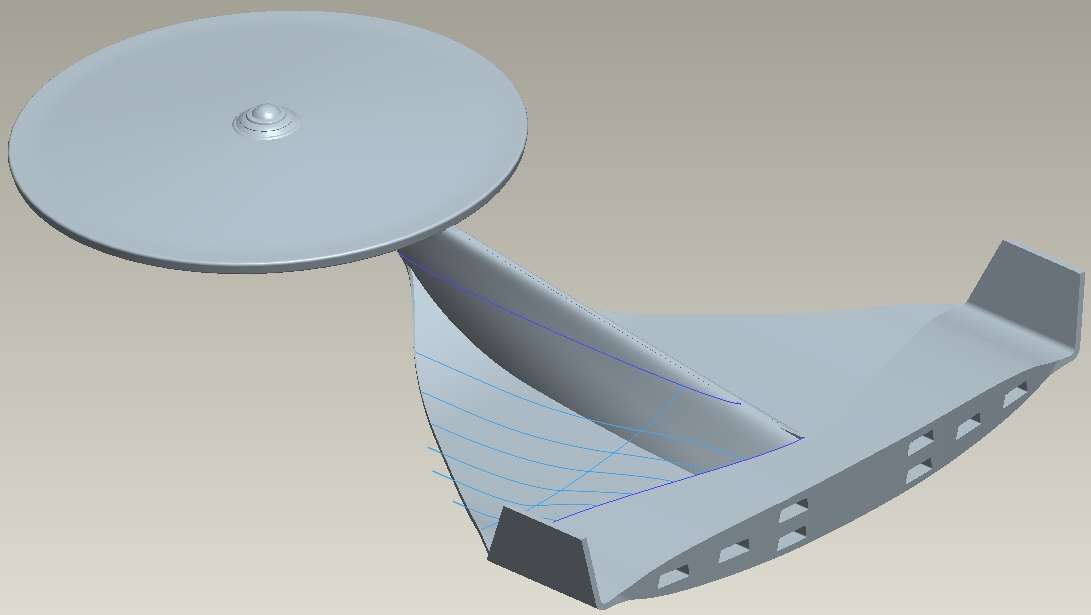Several recent threads have brought back to mind one of my favorite designs, the U.S.S. Ariel, the class ship of a series of four (Ariel, Ichkeul, Manna, Adjuvant).
This is a design worked out quite a few years ago by Aridas Sofia. I've always enjoyed his work... nobody is flawless, obviously, but I enjoy most of what he's worked on.
Now, the threads I've seen so far include two discussing the relative merits of shuttlecarriers and one discussing another variation of this concept, created by TrekBBS poster Bernard Guignard, which he's called the Fredrickstad Class.
The Fredrikstad Class was mentioned in various Fan-pub Trek books, but never shown. Bernard chose to make it a partial upgrade of the Ariel. You can find his thread here:
http://www.trekbbs.com/showthread.php?t=143861
A few years ago, I started working on a 3D model of the Ariel, and I learned my first big "always back up your work" lesson.


There are a few mismatches in the two available views of the Ariel, so it's a matter of making a few compromises to make a model that "mostly matches" both views. But, as always with Aridas' work, the views are very, very CLOSE to being "just right" so those tweaks are minimal. I'm trying to match his original two views as well as I practically can.
The ship is best discussed in the "Heavy Cruiser Evolution" drawing set. The pages I'm referring to can be seen here:

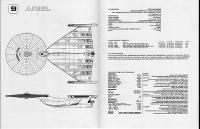
And a high-resolution version of the detail page there:
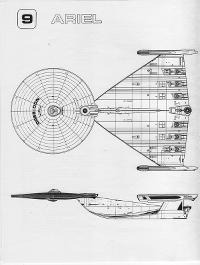
Now, one of the issues with this design is that nobody ever seems to QUITE get the proper secondary hull shape. I had gotten it pretty well developed when I lost my old version... so I'm mainly just replicating my work from that here (but with several years worth of added experience under my belt now).
This project will likely not progress as quickly as some of my prior ones... I have a lot more responsibilities now than I used to have, and my free time is dramatically more limited. Still, I thought I'd share it...
Here are some basic views of the Ariel model I've developed so far. The primary hull shape is correct (but details are absent, and the B/C deck superstructure isn't "teardrop shaped" yet). The secondary hull underside is entirely correct, but I have tweaks to make to the nacelle pylons, and the upper side, with the very complex curvature, is still not really developed. Also, I only have the two-meter-wide section representing the centerline of the dorsal. However, the dorsal will resemble the 1701-D's, except upside down... ie, narrow at the top and flaring to blend into the secondary hull top-side.
First, a top-down view.

Next, the port-side elevation.

Here's the aft view.

Note that the aft view really should consist of this sort of curved pair of surfaces. This detail view, overlaid with the drawing, shows this (it also shows that I still have to tweak my pylons a bit to get them right!)
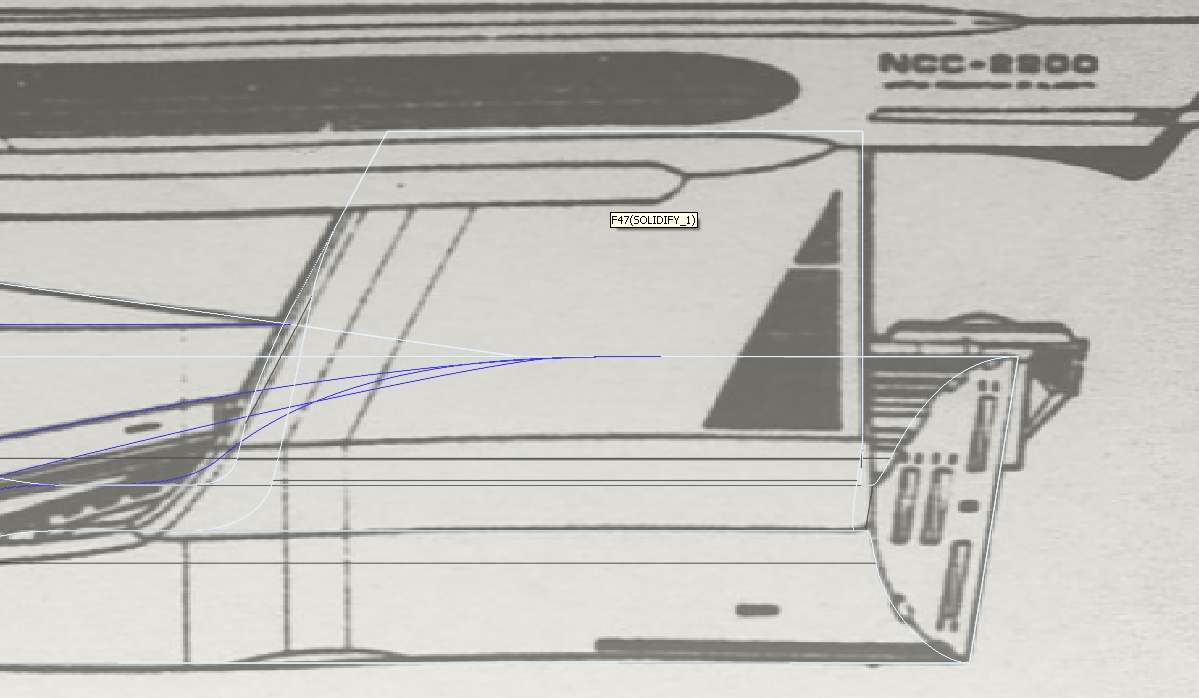
Finally, I've been laying in curves which I'll use to generate my complex topside curvature. I'm doing this by intersecting the lines drawn on Aridas' drawings from top and bottom. For the most part, they line up well, but some minor tweaking has been required. I've hidden the primary hull and gone into wire-frame mode so you can see the curves I've drawn, both on the hull surface and inside, which will eventually form the complex curvature of the secondary hull back. This is a long and tedious process, getting this "just right," but you at least can get the general shape from this image:

I'm hoping to just use nacelles made by someone else... the nacelle is a pain in the @#$ to make, and since this ship is supposed to have the same nacelle housing as most other ships of its era, I don't see much reason to spend a lot of time on that. I'll probably have the whole ship done before I even think about mounting actual engines (though I may incorporate a "block" to represent them during my work.
As always, my goal here isn't to create a "movie-quality" renderable model, but rather to figure out "what goes where, and why" insofar as this design is concerned. That said, it's highly doubtful that I'll do a complete interior on this ship like I've done on some of my other work.
Comments, as always, are welcome.
This is a design worked out quite a few years ago by Aridas Sofia. I've always enjoyed his work... nobody is flawless, obviously, but I enjoy most of what he's worked on.
Now, the threads I've seen so far include two discussing the relative merits of shuttlecarriers and one discussing another variation of this concept, created by TrekBBS poster Bernard Guignard, which he's called the Fredrickstad Class.
The Fredrikstad Class was mentioned in various Fan-pub Trek books, but never shown. Bernard chose to make it a partial upgrade of the Ariel. You can find his thread here:
http://www.trekbbs.com/showthread.php?t=143861
A few years ago, I started working on a 3D model of the Ariel, and I learned my first big "always back up your work" lesson.



There are a few mismatches in the two available views of the Ariel, so it's a matter of making a few compromises to make a model that "mostly matches" both views. But, as always with Aridas' work, the views are very, very CLOSE to being "just right" so those tweaks are minimal. I'm trying to match his original two views as well as I practically can.
The ship is best discussed in the "Heavy Cruiser Evolution" drawing set. The pages I'm referring to can be seen here:


And a high-resolution version of the detail page there:

Now, one of the issues with this design is that nobody ever seems to QUITE get the proper secondary hull shape. I had gotten it pretty well developed when I lost my old version... so I'm mainly just replicating my work from that here (but with several years worth of added experience under my belt now).
This project will likely not progress as quickly as some of my prior ones... I have a lot more responsibilities now than I used to have, and my free time is dramatically more limited. Still, I thought I'd share it...
Here are some basic views of the Ariel model I've developed so far. The primary hull shape is correct (but details are absent, and the B/C deck superstructure isn't "teardrop shaped" yet). The secondary hull underside is entirely correct, but I have tweaks to make to the nacelle pylons, and the upper side, with the very complex curvature, is still not really developed. Also, I only have the two-meter-wide section representing the centerline of the dorsal. However, the dorsal will resemble the 1701-D's, except upside down... ie, narrow at the top and flaring to blend into the secondary hull top-side.
First, a top-down view.

Next, the port-side elevation.

Here's the aft view.

Note that the aft view really should consist of this sort of curved pair of surfaces. This detail view, overlaid with the drawing, shows this (it also shows that I still have to tweak my pylons a bit to get them right!)

Finally, I've been laying in curves which I'll use to generate my complex topside curvature. I'm doing this by intersecting the lines drawn on Aridas' drawings from top and bottom. For the most part, they line up well, but some minor tweaking has been required. I've hidden the primary hull and gone into wire-frame mode so you can see the curves I've drawn, both on the hull surface and inside, which will eventually form the complex curvature of the secondary hull back. This is a long and tedious process, getting this "just right," but you at least can get the general shape from this image:

I'm hoping to just use nacelles made by someone else... the nacelle is a pain in the @#$ to make, and since this ship is supposed to have the same nacelle housing as most other ships of its era, I don't see much reason to spend a lot of time on that. I'll probably have the whole ship done before I even think about mounting actual engines (though I may incorporate a "block" to represent them during my work.
As always, my goal here isn't to create a "movie-quality" renderable model, but rather to figure out "what goes where, and why" insofar as this design is concerned. That said, it's highly doubtful that I'll do a complete interior on this ship like I've done on some of my other work.
Comments, as always, are welcome.


